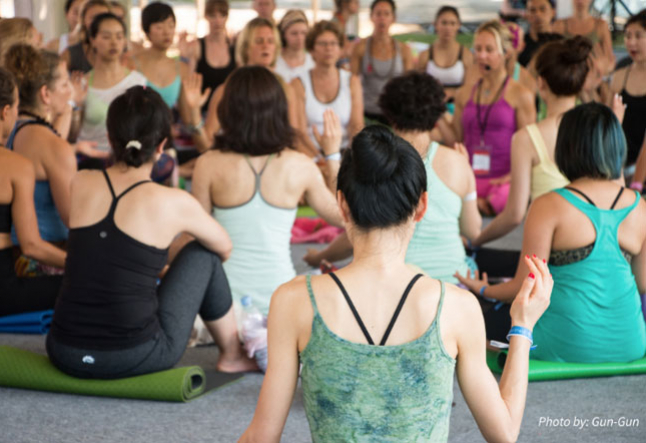spiral my what

a guide to understanding yoga cues
One of the biggest takeaways from a regular yoga practice is finding the ability to listen. More often than not, people begin their journey with yoga thinking that they will be the odd man out or that they’ll look silly to those around them. The truth is, anyone who is practicing yoga for the right reasons isn’t there for the benefit or sake of anyone but themselves.
The time that someone carves out of their day to practice yoga is, in the most gentle way, a selfish time. It is a time for self-love, to refuel and relax and to drop all other agendas so that all parts of your life are approached from a place of balance and a healthier mindset. Utilizing 60-90 minutes a day to devote solely to yourself is absolutely necessary for tending to relationships and personal health and to avoid burning out. With that being said, when people turn to yoga to practice self-love, they aren’t paying attention to anyone around them. That’s because they’ve caught on to the importance of listening.
Throughout the class, the instructor will deliver cues to skillfully and carefully ease their students into each pose. Step by step, you can use their words as a guide to moving through your own yoga practice. That is until they throw out some yoga lingo that could use a little elaboration. Haven’t so many of us been there? We’re giving our strongest Warrior 2 when all of the sudden the teacher says to “hug your navel into your spine.” Eyeballs start to dart around the room for some sort of movement that will explain what on earth that meant.
Also Read>>> Online Yoga Teacher Training
It can be a challenge to understand some of the cues during class, especially when they’re a little more anatomical than a simple “place your foot here and your arms there” sort of direction. You’re not alone. Here’s a quick breakdown of the things you might hear in class and what exactly they mean.
• Ground down through the knife edge of your foot – Keep the outer edge of your foot planted on the mat.
• Ground through all four corners of your feet – Find equal weight distribution through your entire foot so that you’re centered.
• Spiral your thighs inward – Allow your kneecaps to face directly forward, if not slightly inward so that the insides of your thighs are activated.
• Tuck your tailbone under – Tilt your pelvis forward to remove an arch in your low back.
• Hug your navel into your spine – Activate your core by keeping your abdominals flexed.
• Knit your ribs together – Keep your core activated by hugging your ribcage inward rather than allowing them to flare out.
• Lift your heart to the sky – Actively press your sternum, or breastbone, in an upward direction.
• Hug your shoulders onto your back – Spread your collarbones apart while you release all tension from your shoulders.
• Cactus your arms – Straighten your arms out to the sides in line with your shoulders, and bend your elbows 90 degrees so that your forearms and fingers point straight up.
• Reach through the crown of your head – Elongate your neck to create length in your cervical spine.
• Square your hips/shoulders – Bring your hips and shoulders in line with one another, not allowing one side to move above or in front of the other.
• Lengthen your spine – Reach up and out from your waist.
• Hinge from your hips – Bend forward maintaining length in your spine by avoiding rounding.
Also Read>>> Streaming Yoga
To Depart
This is only the tip of the iceberg and sometimes it can feel as though yoga is spoken in another language (see: Sanskrit). Still, interpreting these cues will not only improve your alignment in class, but they’ll instill a level of confidence and understanding whether it’s your first class or you’ve been practicing for years. Happy Practicing!
Read next >> yoga design lab